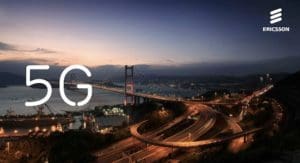Twitter Feed
Cloud Computing Evolves: An Interview with Mats Johansson
Recently, Ericsson Digital released an amazing report on Edge Computing and 5G. In it, they explained how distributed cloud computing is paving the way for the future of network communications. They…
The IoT Nexus: Bosch Connected World 2019 in Berlin
Next week, I will be influencing #LikeABosch as I accept an invitation from the company to attend Bosch ConnectedWorld 2019 (BCW19) in Berlin, Germany. This is one of the world’s largest international…
Survive and Thrive With Digital Transformation
First cloud computing then multi-cloud. How can we get ahead of this digital transformation nightmare? These are the laments heard in conference rooms and board meeting around the world. While…
The “George Jetson” of Today
He grew up in Silicon Valley, landed his first job at Apple Computers, was introduced to Nobel Prize winners by his dad and today, he takes a self-driving car…
MWC19: Where Telecommunications and Cloud Meet
As a cloud solution architect, my passion is learning the details about how cloud computing uniquely supports specific business cases. This curiosity is what drove my excitement when Ericsson invited…
Tulane University SoPA Selects “Architechting Cloud Computing Solutions”
Last week, Packt Publishing announced that “Architecting Cloud Computing Solutions” by Kevin L. Jackson and Scott Goessling was selected for use by the Tulane University School of Professional Advancement, Applied Computing Systems & Technology Program as the textbook for…
5G Wireless Technology Connecting Healthcare
Healthcare is in the middle of massive change. Called digital transformation by many, this term describes the industry’s pursuit of the many promises offered by connected patients, connected caregivers, and…
Maria Lensing: The Network Platform for Healthcare’s Future
As a girl, Maria and her family traveled to Memphis, Tennessee to get cancer treatment for her sick brother. The miracle she observed, as the healthcare providers saved her brother’s…
How “Big Iron” Does “Big Regulation”
According to Verizon, there were over there were over 53,000 security incidents in 2017, with over 2,200 of those identified as confirm data breaches. A Ponemon Institute study also showed…
Mainframe Synergies for Digital Transformation
In July of 2018, Broadcom announced its intentions to acquire CA Technologies. In the press release, Hock Tan, President and Chief Executive Officer of Broadcom, said: “This transaction represents an…
Hybrid IT enables a composable infrastructure which describes a framework whose physical compute, storage, and network fabric resources are treated as services.
Resources are logically pooled so that administrators need to physically configure hardware to support a specific software application, which describes the function of a composable architecture.
This type of transformative infrastructure is foundational to contemporary agile business because a hybrid IT environment, private clouds, public clouds, community clouds, traditional data centers, and services from service providers must be integrated and interconnected.
Composable infrastructures can build new revenue-generating products and services faster while simultaneously addressing the key inhibitors to change, which include the following:
- General concerns regarding lack of adequate hybrid infrastructure security
- The false impression that cloud cannot support the operational/performance requirements of critical applications (e.g., SAP and Oracle)
- Management challenge presented by multi-cloud environments contracts that will include varying levels of governance and service-level agreements (SLAs)
- The need to match employee management skills across various cloud platforms
Composable infrastructure architectures have two major functions. They must be able to disaggregate
and aggregate resources into pools and compose consumable resources through a unified API.
Fifth-generation (5G) wireless networks will significantly enhance the current mobile network environment. These new networks will use multi-access edge computing (MEC) to extend composable enterprise infrastructures to the network edge, a capability broadly referred to as edge computing.
To support this future IT-operating environment, enterprise content and application developers need to collaborate with telecommunications network operators to gain access to edge services.
Using this architecture, “Internet of Things†(IoT) applications can respond in real time to local events and use cloud capabilities for all other data processing functions.
Edge computing application design development model has three locations:
- Client
- Near server
- Far server
An end-to-end IT service designed to operate in an IoT environment follows this model also but with different reference names or components:
- Terminal device component
- Edge component(s)
- Remote component(s)
The IoT architecture emphasizes the distribution of components. In this environment, network services (i.e., routers, firewalls, load balancers, XML processing, and WAN optimization devices) are replaced with software running on virtual machines.
To ensure secure operations, key cybersecurity tasks include the following:
- Securing the controller as the centralized decision point for access to the Software Defined Network (SDN)
- Protecting the controller against malware or attack
- Establish trust by protecting the communications throughout the network by ensuring the SDN controller, related applications, and managed devices are all trusted entities
- Creation of a robust policy framework that establishes a system of checks and balances across all SDN controllers
- Conducting forensics and remediation when an incident happens in order to determine the cause and prevent reoccurrence
Network Function Virtualization (NFV) establishes a virtualized networking environment dedicated to providing different network services. If NFV is used, the SDN can also act as a hypervisor for NFV virtual machines.
Approaches for implementing cybersecurity protections include the following:
- Embed security within the virtualized network devices
- Embed security into the SDN servers, storage, and other computing devices
The Zero Trust security model is centered on the belief that organizations should not trust anything inside or outside their perimeters. This model requires verification of anything and everything trying to connect to its systems before access is granted. The Zero Trust approach uses existing technologies and governance processes in securing the enterprise IT environment.
When designing and deploying transformational solutions across enterprise, cloud, 5G networks, MEC environment, and the Zero Trust paradigm must be extended to include all associated SDNs.
Read more about digital transformation and transformation infrastructure: grab a copy of my new book, Click to Transform, out today!

Cloud Computing
- CPUcoin Expands CPU/GPU Power Sharing with Cudo Ventures Enterprise Network Partnership
- CPUcoin Expands CPU/GPU Power Sharing with Cudo Ventures Enterprise Network Partnership
- Route1 Announces Q2 2019 Financial Results
- CPUcoin Expands CPU/GPU Power Sharing with Cudo Ventures Enterprise Network Partnership
- ChannelAdvisor to Present at the D.A. Davidson 18th Annual Technology Conference
Cybersecurity
- Route1 Announces Q2 2019 Financial Results
- FIRST US BANCSHARES, INC. DECLARES CASH DIVIDEND
- Business Continuity Management Planning Solution Market is Expected to Grow ~ US$ 1.6 Bn by the end of 2029 - PMR
- Atos delivers Quantum-Learning-as-a-Service to Xofia to enable artificial intelligence solutions
- New Ares IoT Botnet discovered on Android OS based Set-Top Boxes










